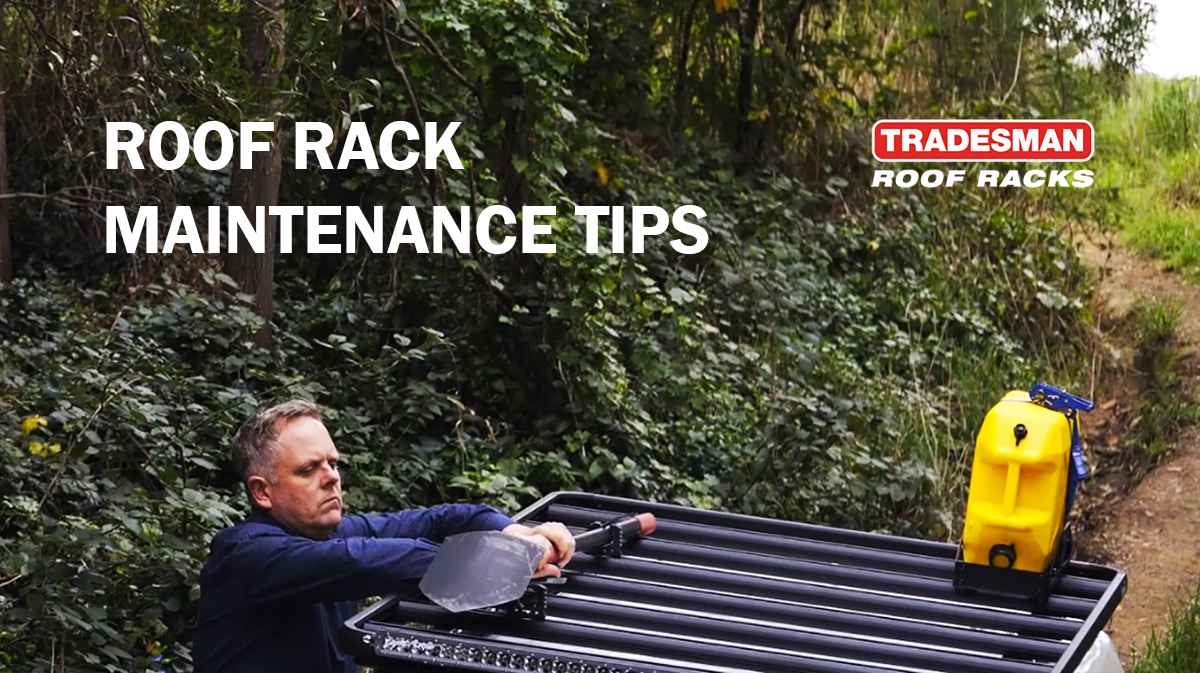Imagine you’re planning your next adventure, your vehicle packed with gear, and your spirits high. But wait, have you checked your roof rack lately?
It’s easy to overlook, yet crucial for your travel plans. Roof racks are your vehicle’s unsung heroes, quietly carrying your bikes, kayaks, or extra luggage. To keep your adventures smooth, regular maintenance of your roof rack is essential. You might be wondering, how do I ensure my roof rack is in top shape?
Don’t worry, we’ve got you covered. Dive into these simple yet effective maintenance tips that will prolong the life of your roof rack and keep your journeys hassle-free. By the end of this article, you’ll feel confident knowing your gear is securely mounted, and your adventures are just a drive away. Keep reading to discover the secrets to maintaining a roof rack that’s ready for any escapade.
Regular Inspections
Look for cracksand ruston your roof rack. Damages can make it unsafe. Check every part carefully. Use a flashlight for dark areas. Fix small problems before they get big.
Loose bolts can be dangerous. Use a wrench to tighten them. Make sure all bolts are secure. Check them regularly. This keeps your roof rack stable.
Fasteners and clamps hold your gear tight. Check for wear and tear. Replace old or broken ones. Ensure they grip firmly. Safe travel needs strong clamps.
Cleaning And Care
Use warm water and mild soap to clean the rack. Avoid harsh chemicals that can damage the surface. Soft cloths are best for wiping away dirt and grime. Rinse thoroughly to remove soap residue. Dry with a clean towel to prevent water spots. Regular cleaning keeps the rack looking new.
Inspect the rack for rust spots regularly. Use rust remover to clean any areas showing signs of rust. Apply a protective coat to shield against future rust. Keep the rack dry when not in use. Moisture is the enemy of metal. Store indoors during wet seasons if possible.
Apply UV protection spray to the rack. This prevents sun damage. Keep the rack covered when not in use. Use car covers to block sunlight. Store the rack in a shade whenever possible. UV rays can weaken materials over time. Protect your investment.
Lubrication Needs
The right lubricant keeps your roof rack working well. Use a silicone-based lubricant. It is safe for all parts. Avoid oil-based products. They might damage plastic and rubber. Choose wisely to protect your rack. Always read the label. Make sure it is suitable for outdoor use. Check compatibility with your roof rack’s material.
Keep moving parts smooth and easy to use. Apply lubricant to hinges and locks. This prevents rust. Use a spray for hard-to-reach areas. Don’t overuse the lubricant. Too much can attract dirt. Clean parts before applying. Regular checks ensure everything works well. Dry racks after use to avoid moisture build-up.

Credit: www.familyhandyman.com
Load Management
Spread the load across the roof rack. Balanced weight prevents damage. Keep heavy items in the center. This helps the car move smoothly. Side weight can cause tilting. Tilt makes driving unsafe. Check weight often.
Follow the weight limit rules. Too much weight can break the rack. Heavy loads can damage the car. Look at the manual for limits. Less weight means safer travel. Check the rack before trips. This avoids surprises.
Tie down all items tightly. Loose items can fall off. Use strong ropes or straps. Check knots for strength. Loose knots can fail. Shake the rack to test security. Adjust knots if needed. Double-check before driving.
Seasonal Adjustments
Roof rack maintenance requires seasonal adjustments for optimal performance. Regular cleaning prevents rust and damage from weather elements. Check bolts and fasteners to ensure they are secure before each use.
Winter Weather Considerations
Snow can hide your roof rack. Check it often for damage. Ice can make screws loose. Tighten them regularly. Salt from roads can cause rust. Clean the rack to prevent rust. Use a cover for your rack in winter. It keeps snow and ice away. A cover also stops salt from touching the metal. Look for cracks on the rack. Cold weather can make them worse.
Preparing For Rainy Seasons
Rain can seep into screws and joints. Check them for leaks. Use waterproof spray on your rack. It keeps water out. Clean the rack after rain. Dirt can stick to wet metal. Dry the rack well. Moisture can cause rust. Store your roof rack inside when not in use. It stays safe from rain damage. Inspect the rack regularly. Fix any issues quickly.
Storage Solutions
Store your roof rack in a dry and cool place. Moisture can cause rust. Use a protective cover to keep dust away. This helps maintain its condition. Keep it off the ground. Use wall hooks or shelves. Check the bolts and screws. Tighten them if they are loose. This ensures everything is secure.
Remove all accessories from the rack. This prevents damage and loss. Clean them thoroughly before storage. Dirt can cause wear. Use labeled boxes for small parts. This makes finding them easier later. Keep all attachments together. This saves time when reassembling. Inspect all parts before storing. Look for cracks or bends. Replace damaged parts to ensure safety.
Replacement Parts
Old roof rack parts can be dangerous. Check bolts and screws for rust. Look for cracks in plastic parts. Inspect rubber grips for wear. Loose parts need fixing. Missing pieces should be replaced. Keep an eye on locks. Broken locks are unsafe. Regular checks keep your rack safe.
Buy parts from trusted stores. Choose brands you know. Match parts with your rack model. Avoid cheap imitations. They may not fit well. Ask for help in stores if unsure. Check reviews online. Happy customers mean good parts. Keep receipts for returns. This helps if parts don’t fit. Quality parts keep your rack strong.

Credit: www.kenganleysubarunortholmsted.com

Credit: tradesmanroofracks.com.au
Frequently Asked Questions
How Often Should I Clean My Roof Rack?
Regular cleaning every three months is ideal for a roof rack. This prevents dirt and debris buildup, which can cause damage. Use mild soap and water for cleaning. Always check for any signs of corrosion or wear during your cleaning routine.
This ensures longevity and optimal performance.
What Materials Are Best For Roof Racks?
Aluminum and stainless steel are the best materials for roof racks. They are durable, lightweight, and resistant to rust. These materials offer excellent strength, ensuring your roof rack can handle heavy loads. Always choose high-quality materials to ensure safety and reliability on the road.
Can Roof Racks Cause Vehicle Damage?
Improperly installed or overloaded roof racks can damage your vehicle. Always follow the manufacturer’s guidelines for installation and weight limits. Regularly check for any loose fittings. This helps prevent scratches, dents, or structural damage. Proper maintenance and installation are key to avoiding these issues.
How Do I Prevent Roof Rack Corrosion?
Regular cleaning and using anti-corrosion sprays can prevent roof rack corrosion. Ensure the roof rack is always dry after exposure to rain. Inspect for any signs of rust and address them promptly. Proper maintenance helps in prolonging the life of your roof rack.
Conclusion
Keeping your roof rack in top shape is essential. Regular checks prevent wear and tear. Clean it often to avoid rust and dirt buildup. Tighten bolts and screws regularly. This ensures safety during travel. Store it properly when not in use.
Avoid overloading to extend its life. A well-maintained rack enhances your vehicle’s utility. It also ensures your trips are worry-free. Follow these tips for a reliable roof rack. Your gear and adventures depend on it. Enjoy safe and hassle-free journeys every time.
Happy travels!
Hi I am Tamim Hasan, I am a normal person. I like to help people so I want to help you through the blog website. If anyone is benefiting through this blog website then you can help me by sharing comments.




